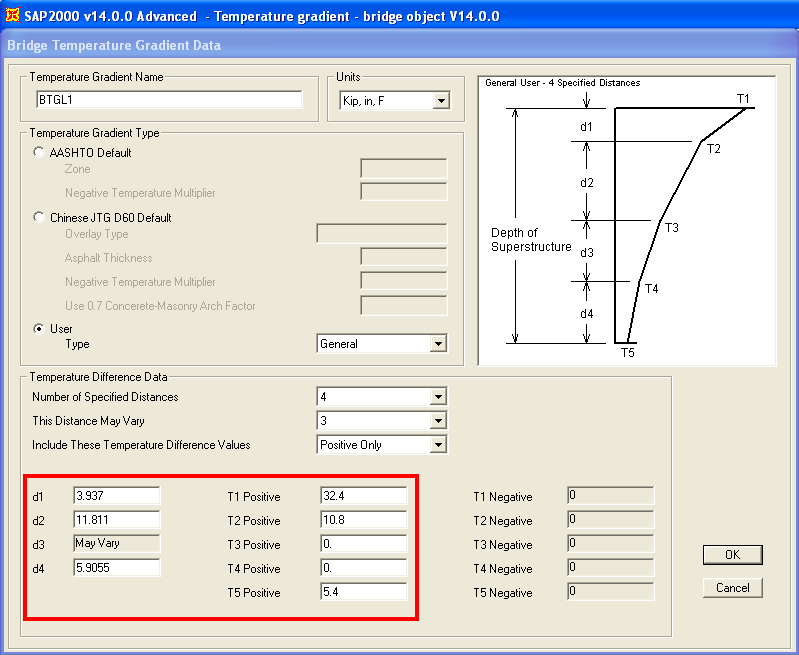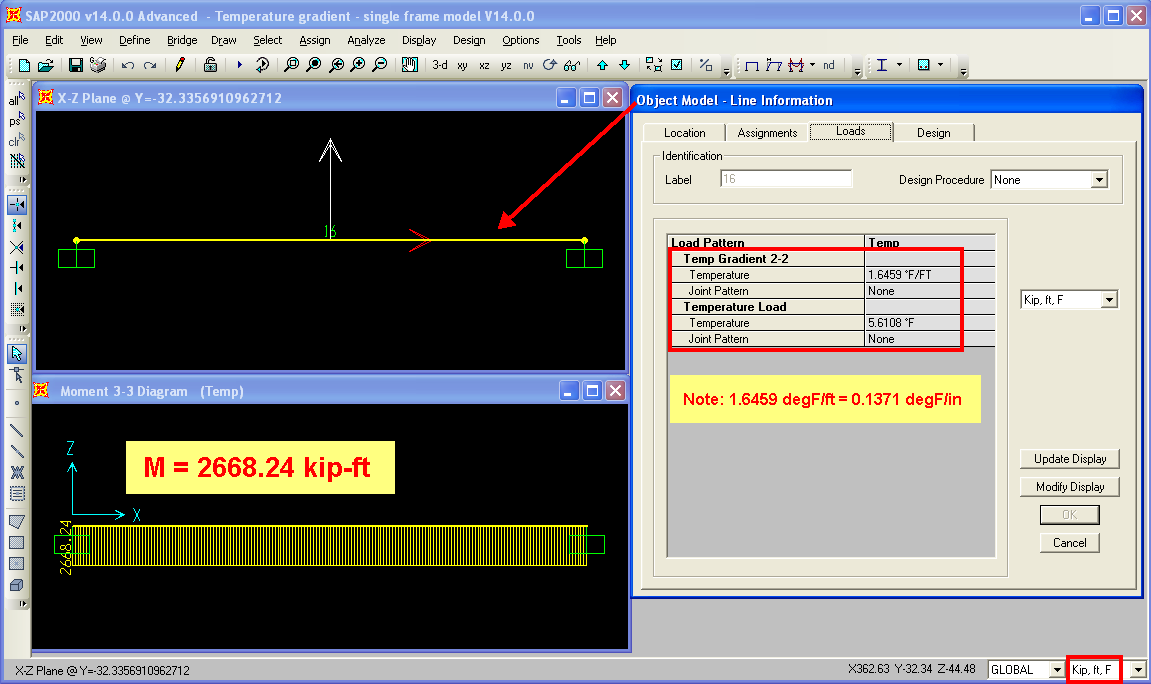The purpose of this tutorial is to explain how SAP2000 applies temperature gradient to bridge objects. SAP2000 is applying the specified [temperature gradient] to the transformed section, calculating the generated axial force P and moment M3, then applying an equivalent constant+linear temperature distribution over the depth. The emphasis here is on getting the correct overall section force and moment on the cross section. If we were to apply the actual temperatures at the nodes as gotten from the specified temperature distribution, the net force and moment would be wrong unless the section was finely discretized.
Procedure
For the original gradient, you can calculate the stress distribution simply as E \alpha T. Integrate this analytically over the section, accounting for the webs and flanges to get the P. Integrate the moment of the stresses about the neutral axis to get M3.
Now assume a linear temperature gradient with two unknowns: the value at the neutral axis, and the gradient. Integrate this over the sections, equate P and M3 to the previous results, and solve for the two unknowns. This is be equal to the values used by SAP2000.
Examples
The general approach described above is illustrated using the two below examples. Refer to the attached hand calculations and the screenshots included for each example for additional details.
Example 1 - Bridge Modeler Model
Please refer to the attached hand calculations for additional details.
The bridge modeler was used to create a single span concrete box bridge fixed at both abutments. The linked bridge object was updated as solid model. Temperature gradient loading is defined as shown in the figure below:

The program calculates solid temperature loads based on equivalent constant plus linear temperature gradient:

The temperature gradient loading causes a moment of 2568 kip-ft, which compares closely to hand calculated moment of 2669 kip-ft:

Example 2 - Single Frame Element Model
Please refer to the attached hand calculations for additional details.
For this example, a single beam frame element fixed at both ends was loaded by the manually calculated constant plus linear temperature gradient loading. The cross-section of the frame element was defined to match the entire bridge deck section for example 1. The temperature gradient loading creates a moment of 2668 kip-ft, which compares closely to hand calculated moment of 2669 kip-ft:

Attachments
- [Hand calculations|^Hand calculations.pdf] (PDF file, 2.07MB)
- [SAP2000 V14.0.0 models|^SAP2000 V14.0.0 models.zip] - one model with bridge object and other model with single frame element (Zipped SDB files, 0.5MB)